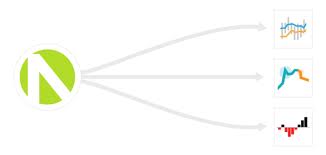YFX Wing Patterns











The commitment of traders report is one of the most widely read reports. It contains general information about how the market is trading overall.
| Open Interest |
Open interest is the total of all futures and/or option contracts entered into and not yet offset by a transaction, by delivery, by exercise, etc. The aggregate of all long open interest is equal to the aggregate of all short open interest. Open interest held or controlled by a trader is referred to as that trader's position. For the COT Futures-and-Options-Combined report, option open interest and traders' option positions are computed on a futures-equivalent basis using delta factors supplied by the exchanges. Long-call and short-put open interest are converted to long futures-equivalent open interest. Likewise, short-call and long-put open interest are converted to short futures-equivalent open interest. For example, a trader holding a long put position of 500 contracts with a delta factor of 0.50 is considered to be holding a short futures-equivalent position of 250 contracts. A trader's long and short futures-equivalent positions are added to the trader's long and short futures positions to give "combined-long" and "combined-short" positions. Open interest, as reported to the Commission and as used in the COT report, does not include open futures contracts against which notices of deliveries have been stopped by a trader or issued by the clearing organization of an exchange. |
|
|---|---|---|
| Reportable Positions |
Clearing members, futures commission merchants, and foreign brokers (collectively called reporting firms) file daily reports with the Commission. Those reports show the futures and option positions of traders that hold positions above specific reporting levels set by CFTC regulations. If, at the daily market close, a reporting firm has a trader with a position at or above the Commission's reporting level in any single futures month or option expiration, it reports that trader's entire position in all futures and options expiration months in that commodity, regardless of size. The aggregate of all traders' positions reported to the Commission usually represents 70 to 90 percent of the total open interest in any given market. From time to time, the Commission will raise or lower the reporting levels in specific markets to strike a balance between collecting sufficient information to oversee the markets and minimizing the reporting burden on the futures industry. |
|
| Commercial and Non-Commercial Traders |
When an individual reportable trader is identified to the Commission, the trader is classified either as "commercial" or "non-commercial." All of a trader's reported futures positions in a commodity are classified as commercial if the trader uses futures contracts in that particular commodity for hedging as defined in CFTC Regulation 1.3(z), 17 CFR 1.3(z). A trading entity generally gets classified as a "commercial" trader by filing a statement with the Commission, on CFTC Form 40: Statement of Reporting Trader, that it is commercially "...engaged in business activities hedged by the use of the futures or option markets." To ensure that traders are classified with accuracy and consistency, Commission staff may exercise judgment in re-classifying a trader if it has additional information about the trader's use of the markets. A trader may be classified as a commercial trader in some commodities and as a non-commercial trader in other commodities. A single trading entity cannot be classified as both a commercial and non-commercial trader in the same commodity. Nonetheless, a multi-functional organization that has more than one trading entity may have each trading entity classified separately in a commodity. For example, a financial organization trading in financial futures may have a banking entity whose positions are classified as commercial and have a separate money-management entity whose positions are classified as non-commercial. |
|
| Nonreportable Positions |
The long and short open interest shown as "Nonreportable Positions" is derived by subtracting total long and short "Reportable Positions" from the total open interest. Accordingly, for "Nonreportable Positions," the number of traders involved and the commercial/non-commercial classification of each trader are unknown. |
|
Download historical files for COT Reports
yfx_admin | ||
yfx_admin | ||
yfx_admin | ||
yfx_admin | ||
yfx_admin | ||
yfx_admin | ||
yfx_admin | ||
yfx_admin | ||
yfx_admin | ||
ThomasThulp | ||
yfx_admin | ||
yfx_admin | ||
yfx_admin | ||
yfx_admin | ||
yfx_admin |

Recent Comments